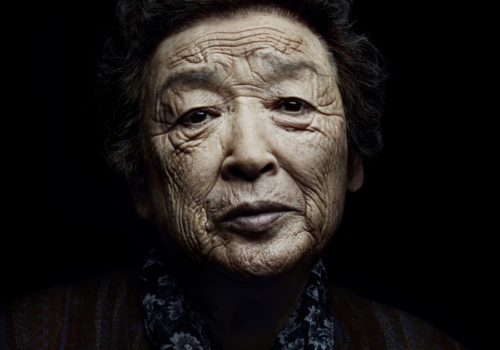“On March 11, 2011, a magnitude 9.3 earthquake occurred off the coast of Honshu, Japan. The tsunami that followed devastated the region of Tokohu over a span of 600 kilometers, claiming 21,000 victims and missing persons, and completely or partially destroying many cities and ports. The natural disaster led to a series of major accidents in the reactors of the Fukushima nuclear plant. The same day, nearly 215,000 people living near the disaster area were evacuated. Later, the region was evacuated by the hundreds of thousands, as anyone living within 30km of the site was forced to leave.
In November 2011 and February 2012, I visited the site, without any idea of what I would do there. I was above all driven by the necessity to face a reality that escaped me and that my imagination rejected. I traveled along 300 kilometers of coastline that was most affected. An extreme desolation reigned. The giant wave had spared nothing. I photographed the landscapes without thinking, convinced that I would need time to understand this cataclysm. There was no one left to bear witness to what had happened. It was a desert, without eyes or voice.
I wanted to meet the people who had lived there before, so I traveled to the temporary communities (kasetsu jūtaku) built after the catastrophe to house those who had lost their homes. While conscious of my intrusion into their privacy, I was driven by the desire to photograph these people and record what they had to say. I knocked on the doors of the housing units. Not everyone was glad to see me. The men and women who agreed to follow me to a photo studio I had set up were perhaps the people with the most desire to live. Their testimonies ended up being just as essential to me as the portraits I took at the scene of chaos, adding their pattern to the web of a collective destiny woven from individual stories. In these fragments of life there is a mixture of distress and resignation, pain and worry, but also a will to live, and a powerful sense of dignity. I wanted to share and pay tribute to the journey of these survivors in search of recognition, and rebirth.”
Denis Rouvre (b. 1967) is a French photographer. He lives and works in Paris. His portraits have appeared in the national and international press. A portfolio of his work of the survivors of the Tohoku earthquake and tsunami was published in the New York Times Magazine. In 2012, one of the portraits from this series earned him a 3rd World Press Photo Prize.
REPRESENTATION
LEON L’AGENT – www.leonparis.com
EXHIBITION
October 3, 2012 – March 17, 2013
Pinacothèque
28 place de la Madeleine
75008 Paris
France
BOOK / LIVRE
LOW TIDE , le Japon du Chaos
Denis Rouvre
Preface : Christian Caujolle
ISBN 9782757206171
25 x 27 cm / 208 pages / 120 illustrations trilingual French-English-Japanese
39 €
















